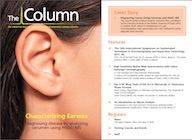Sartorius Announces Acquisition of Danaher Life Science Portfolio
Sartorius Stedim Biotech (SSB) has agreed to acquire parts of Danaher’s Life Science portfolio.
Sartorius Stedim Biotech (SSB) has agreed to acquire parts of Danaher’s Life Science portfolio. The deal is part of a broader transaction between Danaher and Sartorius Group, SSB’s major shareholder, for $750 million. The total purchase price is approximately $750 million in cash of which about a quarter will be allocated to the businesses purchased by SSB.
The transaction is expected to be completed early 2020, however, it is subject to customary closing conditions and the successful acquisition of the GE Biopharma business by Danaher.
“The portfolio proposed for acquisition represents an excellent strategic fit with Sartorius Stedim Biotech,” said Joachim Kreuzburg, SSB Chairman of the Board and CEO. “With the chromatography hardware and resins and the microcarrier businesses we broaden our strong bioprocessing offering, particularly in the downstream area. We look very much forward to welcoming the new teams to Sartorius and to jointly combine our capabilities for the benefit of our biopharma and life science customers.”
For more information, please visit: https://www.sartorius.com/en

The Next Frontier for Mass Spectrometry: Maximizing Ion Utilization
January 20th 2025In this podcast, Daniel DeBord, CTO of MOBILion Systems, describes a new high resolution mass spectrometry approach that promises to increase speed and sensitivity in omics applications. MOBILion recently introduced the PAMAF mode of operation, which stands for parallel accumulation with mobility aligned fragmentation. It substantially increases the fraction of ions used for mass spectrometry analysis by replacing the functionality of the quadrupole with high resolution ion mobility. Listen to learn more about this exciting new development.
Liquid Chromatography to Analyze Vitamin D Proteins in Psoriasis Patients
January 21st 2025Can a protein involved in delivering Vitamin D to target tissues have an altered serum profile in psoriasis patients with cardiovascular disease? Researchers used liquid chromatography (LC) to help find out.
The Complexity of Oligonucleotide Separations
January 9th 2025Peter Pellegrinelli, Applications Specialist at Advanced Materials Technology (AMT) explains the complexity of oligonucleotide separations due to the unique chemical properties of these molecules. Issues such as varying length, sequence complexity, and hydrophilic-hydrophobic characteristics make efficient separations difficult. Separation scientists are addressing these challenges by modifying mobile phase compositions, using varying ion-pairing reagents, and exploring alternative separation modes like HILIC and ion-exchange chromatography. Due to these complexities, AMT has introduced the HALO® OLIGO column, which offers high-resolution, fast separations through its innovative Fused-Core® technology and high pH stability. Alongside explaining the new column, Peter looks to the future of these separations and what is next to come.
A Guide To Finding the Ideal Syringe and Needle
January 20th 2025Hamilton has produced a series of reference guides to assist science professionals in finding the best-suited products and configurations for their applications. The Syringe and Needle Reference Guide provides detailed information on Hamilton Company’s full portfolio of syringes and needles. Everything from cleaning and preventative maintenance to individual part numbers are available for review. It also includes selection charts to help you choose between syringe terminations like cemented needles and luer tips.